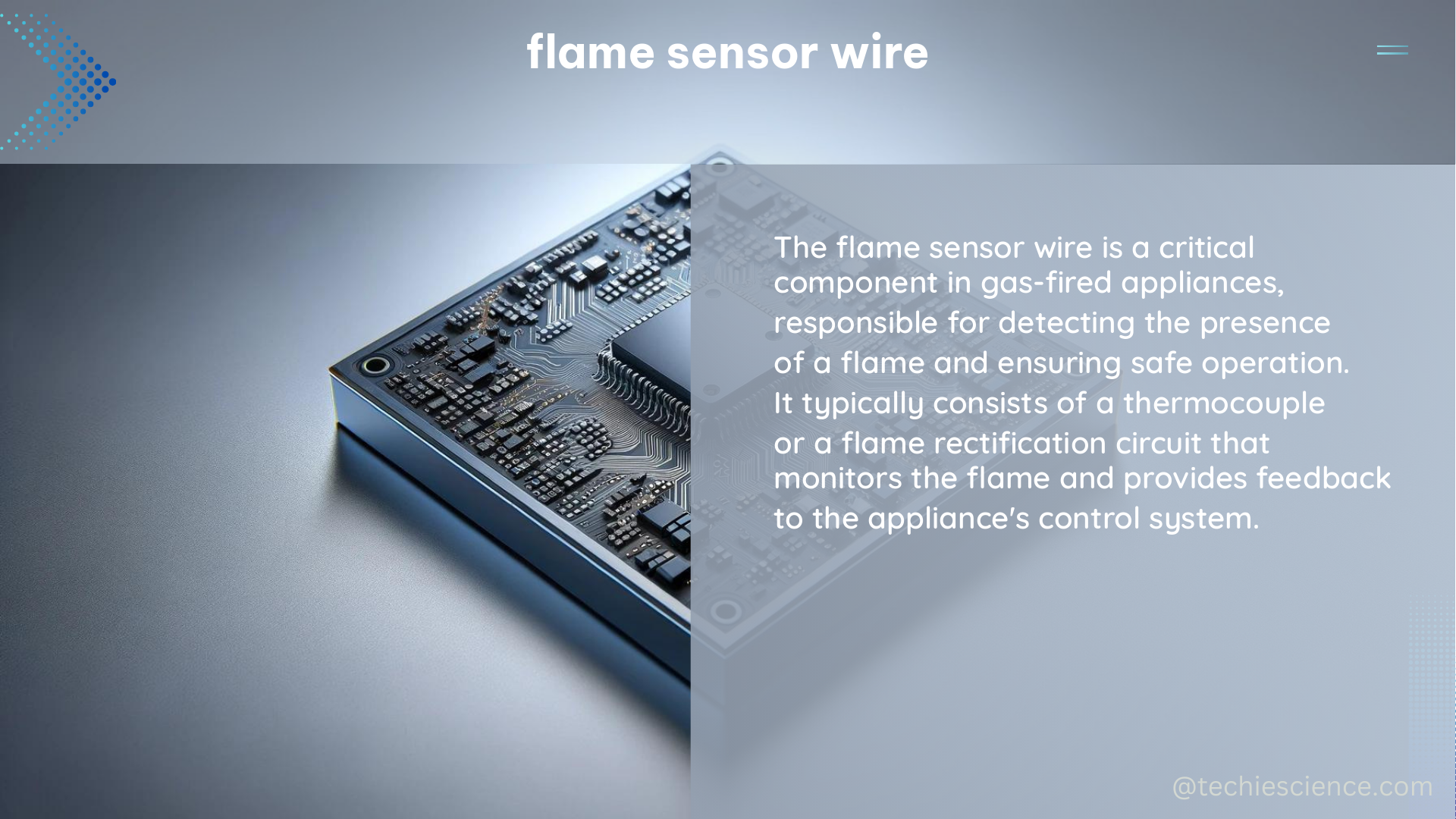The flame sensor wire is a critical component in various systems, including gas detection and fire protection systems. It is responsible for detecting the presence of a flame and transmitting this information to the control unit. The wire is typically made of a heat-resistant material and is coated with a flame-sensitive material that changes resistance when exposed to flame.
Understanding the Technical Specifications of Flame Sensor Wire
The technical specifications of the flame sensor wire can vary depending on the manufacturer and the specific application. However, some common specifications include:
Resistance Range
The resistance range of a flame sensor wire typically falls between 1.5-3.0 ohms. This resistance range is crucial for the accurate detection and transmission of flame presence to the control unit.
Temperature Range
Flame sensor wires are designed to withstand a wide range of temperatures, typically from -40°F (-40°C) to 392°F (200°C). This temperature range ensures the wire’s reliability and performance in various environmental conditions.
Flame Detection Angle
The flame detection angle of a flame sensor wire can range from 30 to 180 degrees. This angle determines the area of coverage for the sensor, allowing it to detect flames within a specific field of view.
Flame Temperature Detection
In terms of measurable and quantifiable data, the flame sensor wire can detect flame temperatures ranging from 600°F (315°C) to 3000°F (1649°C) with an accuracy of ±10%. This wide temperature detection range ensures the sensor’s ability to accurately identify the presence of a flame.
Flame Distance Detection
The flame sensor wire can also detect flame distances ranging from a few inches to several feet, depending on the specific application and the sensitivity of the sensor. This distance detection capability is essential for various fire protection and gas detection systems.
DIY Installation and Maintenance of Flame Sensor Wires

When it comes to DIY installation and maintenance of flame sensor wires, it is crucial to follow the manufacturer’s guidelines and adhere to all safety regulations. Here are some key considerations:
Calibration
Regularly calibrating the flame sensor wire is essential to ensure its accuracy and reliability. This process typically involves adjusting the sensor’s sensitivity and response time to match the specific requirements of the application.
Damage and Wear Inspection
Regularly inspecting the flame sensor wire for any signs of damage or wear is crucial. This includes checking for cracks, fraying, or any other physical damage that could compromise the wire’s performance.
Proper Alignment and Positioning
Ensuring that the flame sensor wire is properly aligned and positioned is critical for its effective operation. The sensor should be placed in a strategic location to maximize its coverage and detection capabilities.
Safety Precautions
When working with flame sensor wires, it is essential to follow all safety regulations and guidelines. This may include wearing appropriate personal protective equipment (PPE), isolating the system, and following proper lockout/tagout procedures.
Conclusion
The flame sensor wire is a critical component in various systems, and its technical specifications and measurable data are essential for proper installation, maintenance, and operation. By understanding the wire’s technical details and following the manufacturer’s guidelines, DIY enthusiasts can ensure the safe and effective use of flame sensor wires in their applications.
References
- FIREMON: Fire effects monitoring and inventory system – https://www.fs.usda.gov/rm/pubs_series/rmrs/gtr/rmrs_gtr164.pdf
- JCIDS Manual 31 August 2018 MANUAL FOR THE OPERATION OF … – https://www.acq.osd.mil/asda/jrac/docs/2018-JCIDS.pdf
- Honeywell Gas Detection – https://www.honeywellanalytics.com/~/media/honeywell-analytics/documents/english/11296_gas-book_v5_0413_lr_en.pdf?la=en
- Gas Book – Safety and Productivity Solutions | Honeywell – https://sps.honeywell.com/content/dam/honeywell-edam/sps/his/en-us/documents/services/sps-safety-services-gas-book.pdf

The lambdageeks.com Core SME Team is a group of experienced subject matter experts from diverse scientific and technical fields including Physics, Chemistry, Technology,Electronics & Electrical Engineering, Automotive, Mechanical Engineering. Our team collaborates to create high-quality, well-researched articles on a wide range of science and technology topics for the lambdageeks.com website.
All Our Senior SME are having more than 7 Years of experience in the respective fields . They are either Working Industry Professionals or assocaited With different Universities. Refer Our Authors Page to get to know About our Core SMEs.